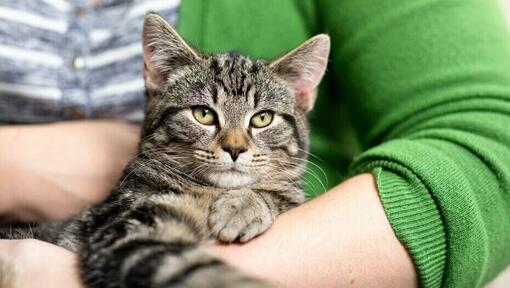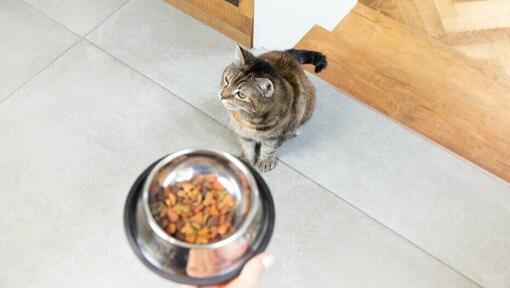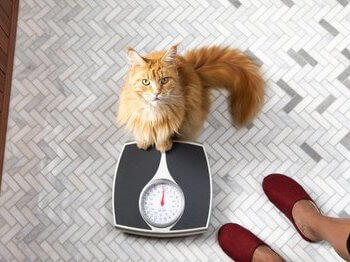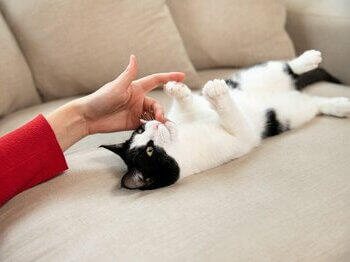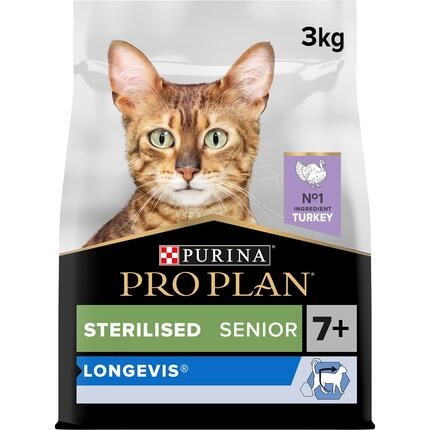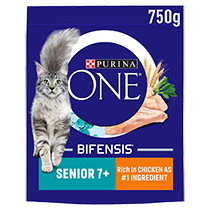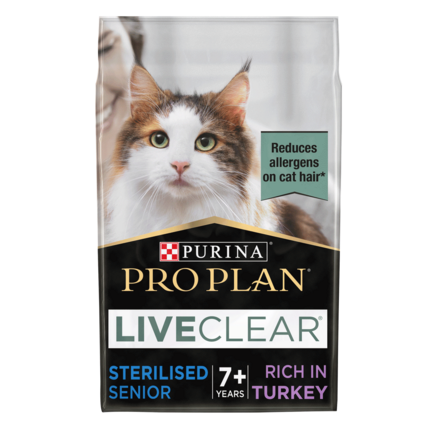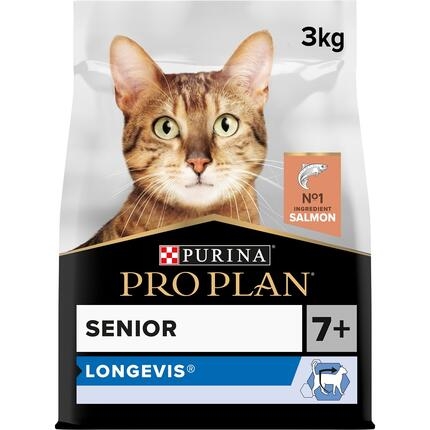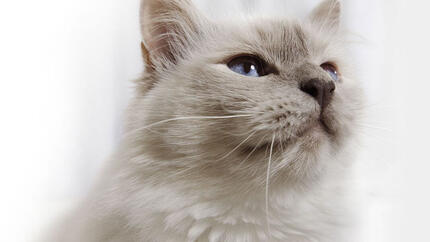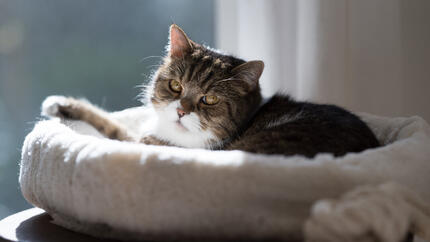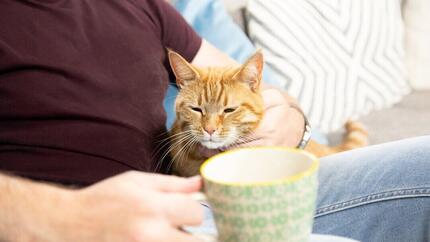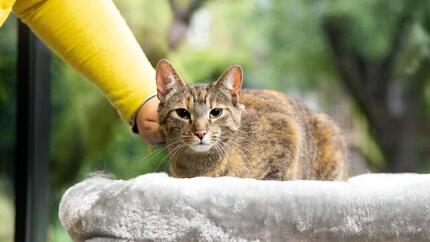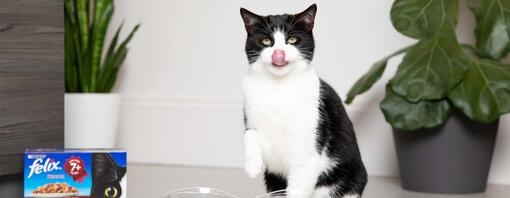
From around the age of seven you’ll probably notice that your older cat starts taking life a bit easier. Support this slower life and help them stay healthy and happy with a diet that’s designed just for senior cats.
As cats age and their activity levels reduce, their nutritional needs change. Spending roughly 40% of their lives classified as seniors, it’s crucial to provide them with a high-quality, tasty diet that includes easily digestible protein and carbohydrates, balanced with key nutrients and controlled levels of fat. Key minerals support ageing joints, and vitamins help support the ageing immune system.
A senior cat may start to become less active, if they are an outdoor cat they may begin to spend more time indoors, and have a slower metabolism. These can all add up to them putting on some extra weight. Equally, as they reach their geriatric years, illness and a reduction in their sense of taste and smell can affect their appetites, which will have an impact on their body condition. This is why it's so important to revisit their diet and nutritional needs regularly.
What to feed senior cats
It’s generally recommended to move older cats onto a specially formulated senior cat food in preference to a normal ‘adult’ cat food, as long as they don’t have any underlying medical conditions or your vet has advised you otherwise.
Senior cat foods provide high-quality protein and many senior cat foods also contain added vitamin E to strengthen your pet’s natural defences. Importantly they contain fewer calories, helping your pet to maintain their optimum body weight as their activity levels drop. This means your cat can continue to enjoy mealtimes to the full without compromising on the essentials or losing their slimline shape.
As cats age, their sense of smell and taste can fade a little, along with their ability to chew. Smaller, softer pieces will help your older cat get the most out of meals, particularly for sensitive mouths that may also have lost a few teeth. Higher meat content can also improve the smell and flavour of their food, to make it more appealing to them.
As always, when changing to a new food, you should do so slowly. Start by offering a small amount of it (10%) at the same time as the old diet, slowly building up the proportion over a week to ten days until you are only feeding the new senior formula food. If your elderly feline refuses to eat the new food, experiment with different flavours to try and find one they prefer. If they are still not keen on their new diet, consult your vet who can advise you on alternative formulas if needed. If your cat goes off their food totally, however, it is important to visit your vet straight away.
"As cats age, their sense of smell and taste can fade a little, along with their ability to chew."
How to feed senior cats
Feed older cats little and often, as they may feel overwhelmed by a large amount of food. So long as they don’t have a medical condition that makes them unsuitable, you can also offer the occasional cat treat, and continue to use food in any enrichment toys they enjoy playing with.
Serve food at room temperature so that your cat can taste and smell it properly. If you’re feeding wet food, you’ll need to remove opened cans or pouches from the fridge around two hours before feeding time. It’s fine to use a microwave to warm wet foods through, but only for a very short time and make sure the food only reaches room temperature, and is never hot. When storing wet food, keep it refrigerated and never keep it opened for longer than 24 hours.
Should I feed my senior cat wet or dry food?
As cats age, their dietary needs can change, making it essential to carefully consider whether to feed your senior cat wet or dry food.
Wet senior cat food
Wet food can be particularly beneficial for senior cats as it helps maintain hydration. The softer texture of wet food is also easier for older cats to chew, especially if they have dental issues. With wet food for senior cats, refrigeration is key. Once opened, store cans or pouches in the refrigerator and use them within 24 hours. Ensure it is served at room temperature, to enhance both the smell and the taste – you can do this by either by taking it out of the fridge a couple of hours beforehand or warming it slightly in the microwave. If you do this, stir it properly before giving it to your cat – and never serve wet food hot, as this can burn your cat's mouth.
Dry senior cat food
On the other hand, dry food for senior cats can be more convenient to store and serve and may help with dental health by reducing plaque buildup. Just ensure that your senior cat is drinking plenty of water if you opt for dry food. Store it in a dry, clean environment to prevent moisture and spoilage. Re-sealable packaging or an airtight container keeps it tasty by sealing in the aroma and stopping it from going stale.
Ultimately, the best choice depends on your cat’s individual health needs, preferences, and any specific recommendations from your veterinarian. A combination of both wet and dry food might offer a balanced approach, providing the benefits of both types of food.
How should I feed my senior cat?
It's important to keep your cat's food bowl clean and low. Avoid leaving wet food out too long, as cats can be picky about freshness. Stick to a regular feeding schedule and choose a quiet, peaceful spot away from litter boxes and your own eating area. If you have multiple cats, keep their bowls apart to prevent fights. You may need to feed your older cat separately to prevent younger cats stealing their food or bullying them.
How much should I feed my senior cat?
Older cats often benefit from 2-3 smaller meals a day and be sure to look for senior cat food that’s easy on their stomach.
While feeding guides on pet food packaging provide a helpful starting point, it's essential to remember that every cat is unique, and their individual dietary needs can vary based on factors like age, breed, activity level, and metabolism. When determining the appropriate amount of food for your senior cat, prioritise maintaining a lean and healthy body condition. Regularly monitor their weight and body condition score, and adjust their food intake accordingly. If you're unsure about the ideal portion size for your cat, consult your vet for personalised guidance.
In addition to providing a balanced diet, ensuring access to fresh, clean water is crucial for your senior cat's health. Offer them plenty of water in a large, sturdy bowl made of metal or ceramic, as these materials are less likely to harbour bacteria. Some cats prefer to drink from a running water source, so consider investing in a cat fountain to encourage hydration.
Place a bowl in every room your senior cat spends time in. As they age, they may become more reluctant to move far to access water.
It’s common for older cats to put on weight as their activity-levels drop. As overweight and obese cats are more likely to develop diabetes and urinary problems, and are at risk of arthritis, it’s important to take it seriously.
Weigh your pet regularly and assess their body condition score to check that they are a healthy weight. If you notice your older cat is overweight, have a word with your vet. This is particularly important if you’ve noticed your cat is sometimes reluctant to eat, as this is may be sign of an underlying disease.
Choose a high-protein, low-carbohydrate diet. A diet with a higher protein content and lower carbohydrate content can help your cat maintain a healthy weight. Examples could include grain-free cat food as well as wet food, which is also high in protein and low in carbs. The lower calorie levels in senior cat foods can help control weight gain – try one of Purina’s specially formulated 'light' products to help your pet slim down.
Do not put your older cat on a diet without first consulting your vet.
Equally, older cats can often get thinner as ageing can affect their health and senses. With a weaker sense of taste and smell, their appetite may decrease.
If your vet is confident that there’s no medical reason for your cat’s loss of appetite, you can try a few simple techniques yourself to encourage them to eat. For example, try warming the food to room temperature, or adding a small amount of a strong-smelling/tasting treat that you know your cat loves, such as a spoonful of tuna to each meal. Varying the flavour and texture of the food may also help. Ensure the food is easily accessible, particularly if your senior cat has reduced mobility.
Before changing your senior cat’s diet, speak to your vet. They’ll ensure that they are on the best feeding plan to suit their needs and advise you on how to make changes to their diet as easily as possible.
In conclusion, feeding your senior cat requires careful attention to their changing nutritional needs. By providing a balanced diet tailored to their age and activity levels, monitoring portion sizes, and ensuring proper food storage, you can support your cat's health and well-being in their golden years. Always consult with your vet to make informed decisions that best suit your cat's individual needs, helping them live a comfortable, healthy and happy life as they age.


